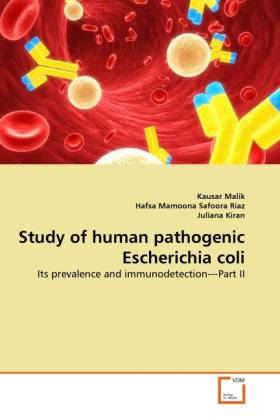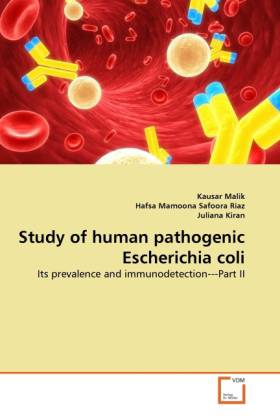
- Afhalen na 1 uur in een winkel met voorraad
- Gratis thuislevering in België vanaf € 30
- Ruim aanbod met 7 miljoen producten
- Afhalen na 1 uur in een winkel met voorraad
- Gratis thuislevering in België vanaf € 30
- Ruim aanbod met 7 miljoen producten
Zoeken
Study of human pathogenic Escherichia coli
Kausar Malik, Hafsa Mamoona Safoora Riaz, Juliana Kiran
Paperback | Engels
€ 48,45
+ 96 punten
Omschrijving
A minority of Escherichia coli (E. coli) strains are capable of causing human illness. E. coli O157: H7 has now been reported from Pakistan. Infection with E. coli O157: H7 may present with a wide range of clinical manifestations. This research work was based on Microbial, Immunological screening and Molecular study of pathogenic bacteria E. coli in meat samples (Beef, Mutton, Quail and Fish), in hawkers foods: dahi bhala, fruit chat, fruit juices and milk shakes. 300 Meat samples, fruit juices and milk shakes were collected from Lahore. 300 Dahi bhala & fruit chat samples were collected from Lahore and Gujranwala. Different media & mEC with Novobiocin, used for Growth, identification and selective isolation of E. coli O157: H7. 225 meat, 147 Dahi bhala and 146 fruit chat samples were identified as contaminated with E. coli by culture method. Fresh juices and milk shakes are also found contaminated.Production of anti-E. coli was performed & used for Immunological studies of all samples, verified the results by using commercial mAb.Molecular studies of E. coli O157: H7 were performed.Crude proteins from E. coli were extracted & band patterns were observed by SDS
Specificaties
Betrokkenen
- Auteur(s):
- Uitgeverij:
Inhoud
- Aantal bladzijden:
- 64
- Taal:
- Engels
Eigenschappen
- Productcode (EAN):
- 9783639306095
- Verschijningsdatum:
- 3/11/2010
- Uitvoering:
- Paperback
- Formaat:
- Trade paperback (VS)
- Afmetingen:
- 152 mm x 229 mm
- Gewicht:
- 104 g

Alleen bij Standaard Boekhandel
+ 96 punten op je klantenkaart van Standaard Boekhandel
Beoordelingen
We publiceren alleen reviews die voldoen aan de voorwaarden voor reviews. Bekijk onze voorwaarden voor reviews.











